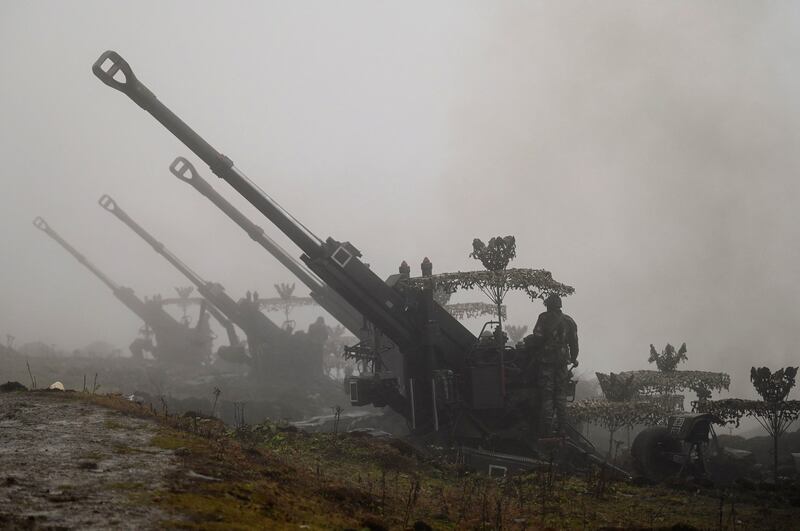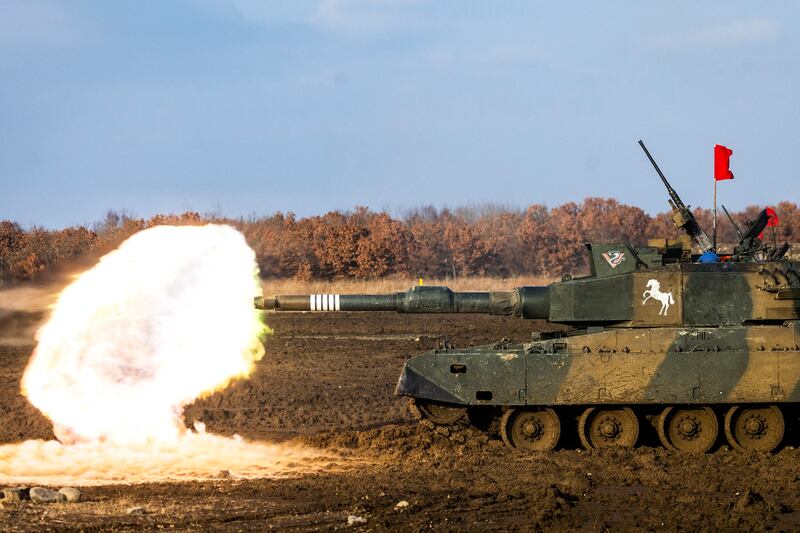UPDATED at 12:34 p.m. on 9-8-2022
Senior U.S. officials are traveling to India this week for talks among the so-called Quadrilateral Security Dialogue, or "Quad." This grouping compromises Australia, India, Japan, and the United States and is widely viewed as a move by like-minded democracies to contend with an increasingly assertive China and its rising military power.
Mai Tran of RFA Vietnamese recently conducted an email interview with Satoru Nagao, an expert on U.S.-Japan-India security cooperation who is a non-resident fellow at the Hudson Institute, a Washington, D.C.-based think tank. Nagao discussed China's apparent expansionist strategy in the Asia-Pacific and the security ties that are emerging among rival powers to cope with it. Satoru’s comments have been edited for length.
RFA: What is China's military strategy in the Indian Ocean, Pacific Ocean, and the South China Sea?
Nagao: Beijing's strategy is to exploit the situation whenever it finds a power vacuum. We can see some examples in the 20th century.
In the 1950s, in the South China Sea, right after France withdrew its troops from Indochina in 1954, China occupied half of the Paracel Islands.
By 1974, one year after the U.S. withdrew from South Vietnam, China immediately occupied the other half of the islands.
In the 1980s, shortly after the Soviet Union reduced its military presence in Vietnam, China expanded its territory in the Spratly Islands, occupying six areas there in 1988.
In 1992, the US Army ended its 92-year presence in the Philippines. And three years later, in 1995, China occupied Mischief Reef, administered by the Philippines.
These activities show that China's strategy is to choose the moment when the military balance shifts and power gaps appear to expand its territory.

RFA: Does China continue to pursue that expansionist strategy today?
Nagao: If the above historical observation is true, China will continue to escalate its activities because, over the past decade, the military balance has shifted in its favor.
According to the Stockholm International Peace Research Institute military expenditure database, from 2011-2020 China increased its military expenditure by 76%. During the same period, India increased its military expenditure by 34%, Australia by 33%, and Japan by only 2.4%. The United States decreased its expenditure by 10%.
At the same time, China has tried to expand its territorial claims in the South China Sea, the East China Sea, Taiwan, the South Pacific, the Indo-China border, and the Indian Ocean because it sees a power vacuum in these areas. In the waters around the Japanese-administered Senkaku Islands, China’s Coast Guard has increased intruding activity from 12 times in 2011 to 819 times in 2013, 707 times in 2015, and 1,097 times in 2019. On the western border, China made 213 intrusions into Indian territory in 2011. It increased the number of intrusions into Indian territory every year: 426 times in 2012, 473 times in 2017, and 663 times in 2019. Since 2019, in the South China Sea, China has continuously intruded simultaneously into the exclusive economic zones of Vietnam, Malaysia, and the Philippines.
RFA: What is the political and military context of the birth of Quad?
Nagao: The strategic goal of the Quad is to re-establish the military balance to end the power vacuums that China is trying to fill. To do this, they need not only to increase their defense budget but also to restructure their own security systems.
Historically, the United States and its allies in the Asia-Pacific region have organized security forces based on the “hub and spoke” model. However, this model is no longer practical for preventing Chinese expansion.
The "hub and spoke" pattern is a grid-like arrangement like a bicycle wheel, in that there is a hub and spokes woven together to keep the wheel steady in motion.
In this "hub and spoke"-based security system, the wheel hub is the United States, and the spokes are U.S. allies such as Japan, Australia, Taiwan, the Philippines, Thailand, and South Korea in the Indo-Pacific. This model is heavily dependent on the U.S. China's recent expansion shows that the current system is no longer adequate to thwart Chinese expansionist strategy.
Because the current security model does not work well, the United States and its allies have been restructuring the security system based on new linkages. In this new network, U.S. allies and partners work together and share the security burden with the United States and with each other.
That is why recently there have been many multilateral security cooperation agreements, such as U.S.-Japan-India, Japan-India-Australia, Australia-U.K.-U.S., India-Australia-Indonesia, India-Australia-France, and U.S.-India-Israel-UAE. These forms of cooperation are creating a new landscape of security in the region.
In that context, the Quad is just one of many examples of how countries work together and share the burden of regional security when dealing with China, an emerging military power accompanied by worrisome expansionist nationalism.

Defending multiple fronts
RFA: How does the Quad work to deal with China's expansionist strategy?
Nagao: The Quad's strategy is to build a game to force China to defend multiple fronts at once. Once the Quad organizes such a network, China must simultaneously allocate defense resources against the U.S. and Japan on the Pacific side as well as against India on the India-China border. Although China has been increasing military spending rapidly, the cooperation of the Quad's four nations will maintain the military balance. That will make China rethink its ambition so that peace and international order can be maintained.
The ability to attack is the core element of the above game. In the Asia-Pacific, only the U.S. possesses the capability to attack China. If Japan, Australia, and India share the same long-range strike capability, the combined capabilities of all four Quad countries force China to defend on multiple fronts.
In September 2021, Australia, the United Kingdom, and the United States announced the establishment of AUKUS, an alliance focusing on helping Australia acquire and maintain eight nuclear submarines. Once Australia has a fleet of nuclear submarines with long-range strike capabilities, the military imbalance today in the entire Asia-Pacific region will change.
Non-Quad countries such as Taiwan, Vietnam, the Philippines, and South Korea are also increasing their long-range strike capabilities with surface-to-surface missiles. These factors also contribute to the balance of forces in the region.
RFA: India is a member of the Shanghai Cooperation Organization, an organization established by China to counterbalance the West. So why did Japan and the U.S. invite India to join Quad?
Nagao: To deal with China, India is needed. Without India, China can concentrate its military power against Japan, the U.S. side.
And India’s stance against China is very strong. There is no Chinatown in India. Such a country is rare in the world. India is the most hawkish country against China.
India’s involvement in SCO, BRICS, etc does not matter. India needs a Central Asia policy including Afghanistan. That is why they need to join. But India does not join the anti-U.S. movement even if they are in these groups.

Opening up the Quad
RFA: South Korea reportedly seeks to attend the Quad summit as an observer in May. Does the Quad have a mechanism to open the door for other countries to join as non-member status? Which countries can join as observers?
Nagao: The Quad is the counter-China group. If South Korea joins, it creates problems.
South Korea has hesitated to show a strong stance against China. China is a formal ally of North Korea, and they (together) fought in Korea. In this case, South Korea cannot play a key role in the Quad if they join.
And if South Korea joins, South Korea wants to talk about the North Korean problem in the Quad meeting. But India is not interested in the issue.
In addition, if South Korea joins, Japan and South Korea will fight each other because there are plenty of problems, including their territorial dispute.
Therefore, if South Korea joins, the Quad will lose its main purpose (to counter China).
South Korea can contribute to the Quad or the Indo-Pacific because South Korea is exporting weapons to strengthen military capabilities in the countries around China. For example, India, Indonesia, Philippines are importing weapons from South Korea. South Korea can contribute to countering China’s strategy case-by-case.
RFA: What strategy does China apply to deal with the Quad? If countries like Vietnam and other ASEAN countries participate in the Quad, how should they participate to get more benefits but not provoke China to attack?
Nagao: Southeast Asian countries need to stop China's territorial expansion. But at the same time, China's investment and trade are still influential for Southeast Asian countries. Because Quad-China competition is escalating, in the future, Southeast Asian countries need to choose a side. And finally, the Quad will win the competition against China. Indeed, there was no country that competed with the U.S. that survived (USSR, Japan, Germany). Thus, pro-Quad is beneficial for Southeast Asia … Gradually, Southeast Asian countries can shift their stance toward Quad, but it should not be too provocative against China. That is pro-Quad neutrality.
This story has been updated to correct references to the name of Satoru Nagao.
